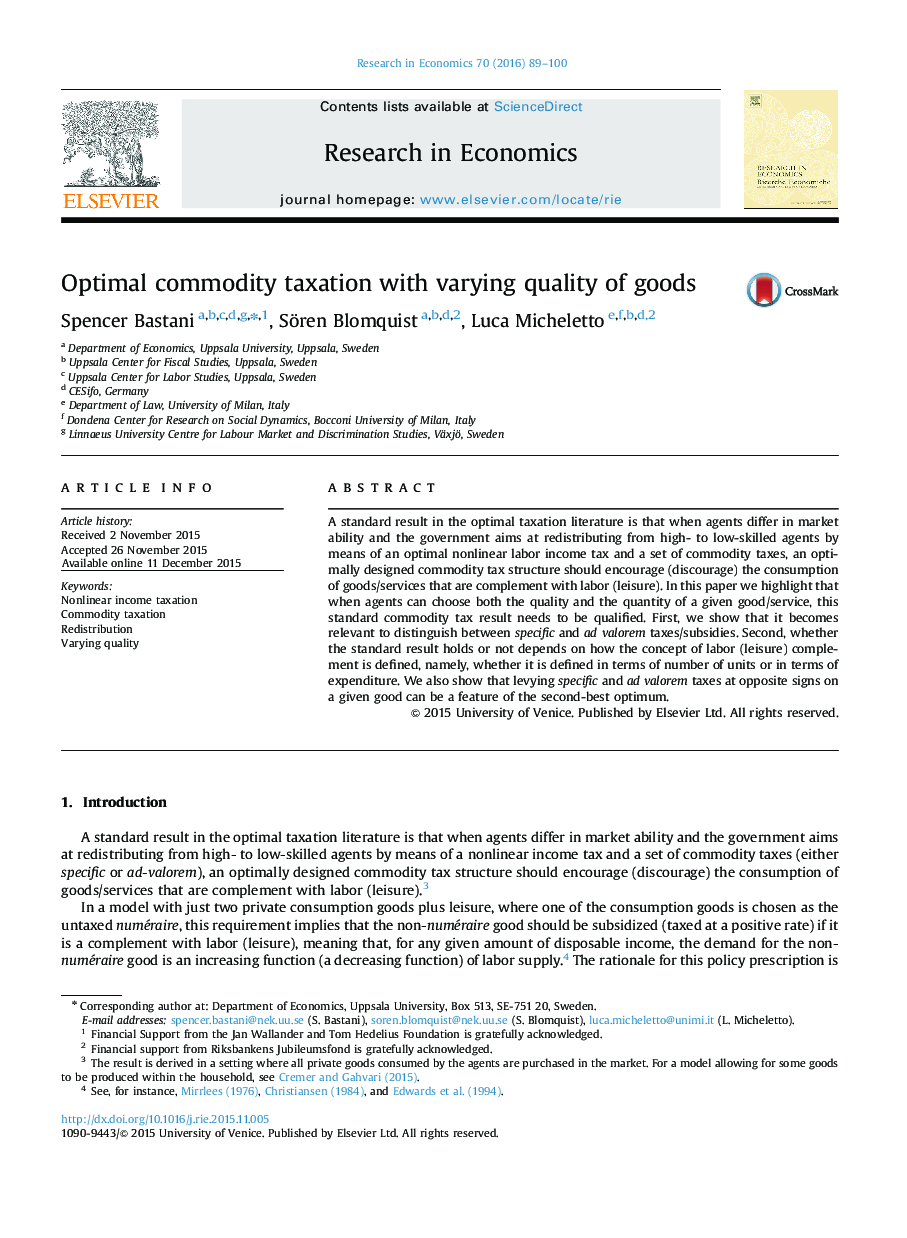| Article ID | Journal | Published Year | Pages | File Type |
|---|---|---|---|---|
| 984528 | Research in Economics | 2016 | 12 Pages |
•We study the optimal design of income and commodity taxes.•Agents choose both the quantity and quality of one of the consumption goods.•In this setting it is important to distinguish between specific and ad-valorem commodity taxes.
A standard result in the optimal taxation literature is that when agents differ in market ability and the government aims at redistributing from high- to low-skilled agents by means of an optimal nonlinear labor income tax and a set of commodity taxes, an optimally designed commodity tax structure should encourage (discourage) the consumption of goods/services that are complement with labor (leisure). In this paper we highlight that when agents can choose both the quality and the quantity of a given good/service, this standard commodity tax result needs to be qualified. First, we show that it becomes relevant to distinguish between specific and ad valorem taxes/subsidies. Second, whether the standard result holds or not depends on how the concept of labor (leisure) complement is defined, namely, whether it is defined in terms of number of units or in terms of expenditure. We also show that levying specific and ad valorem taxes at opposite signs on a given good can be a feature of the second-best optimum.
